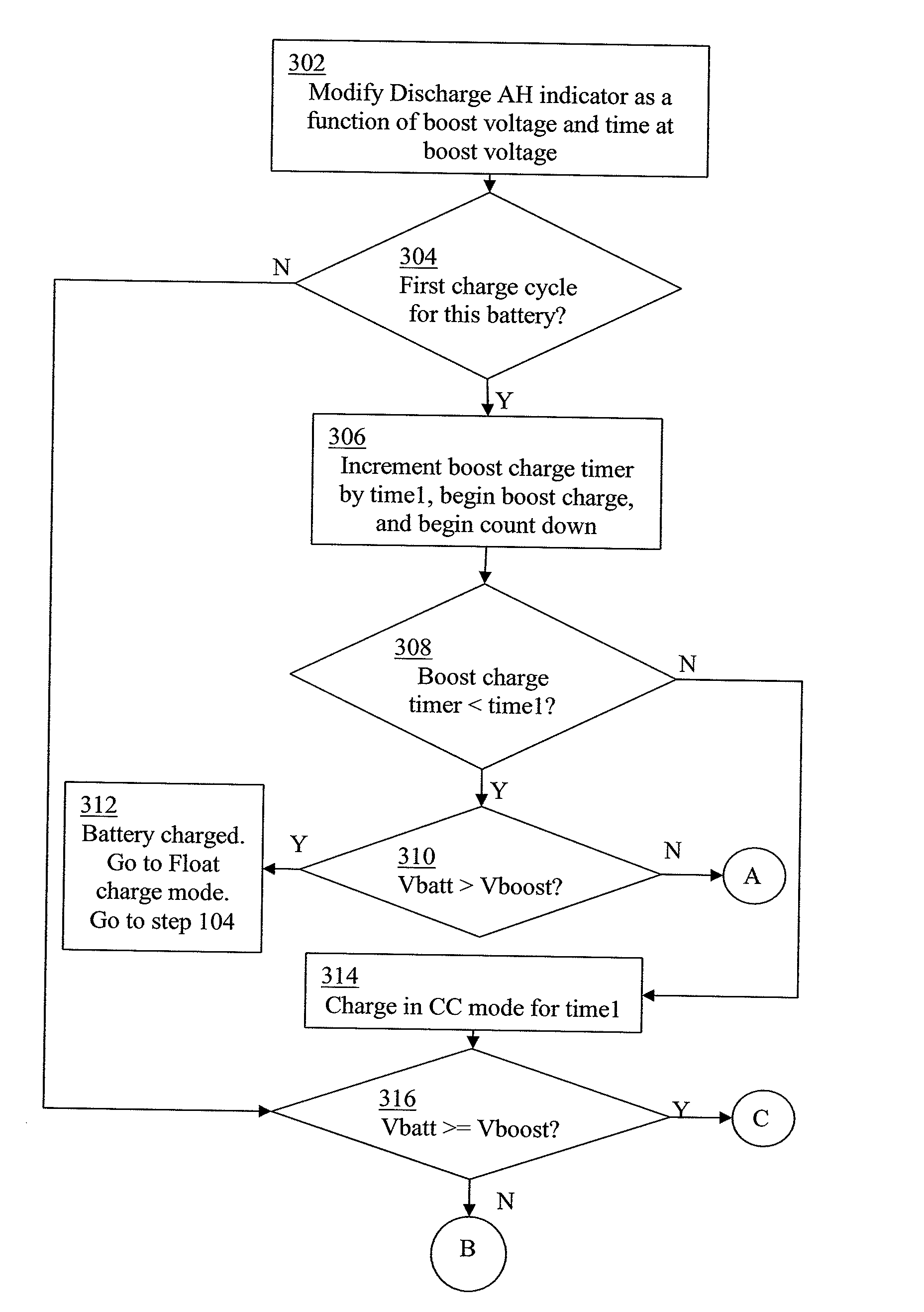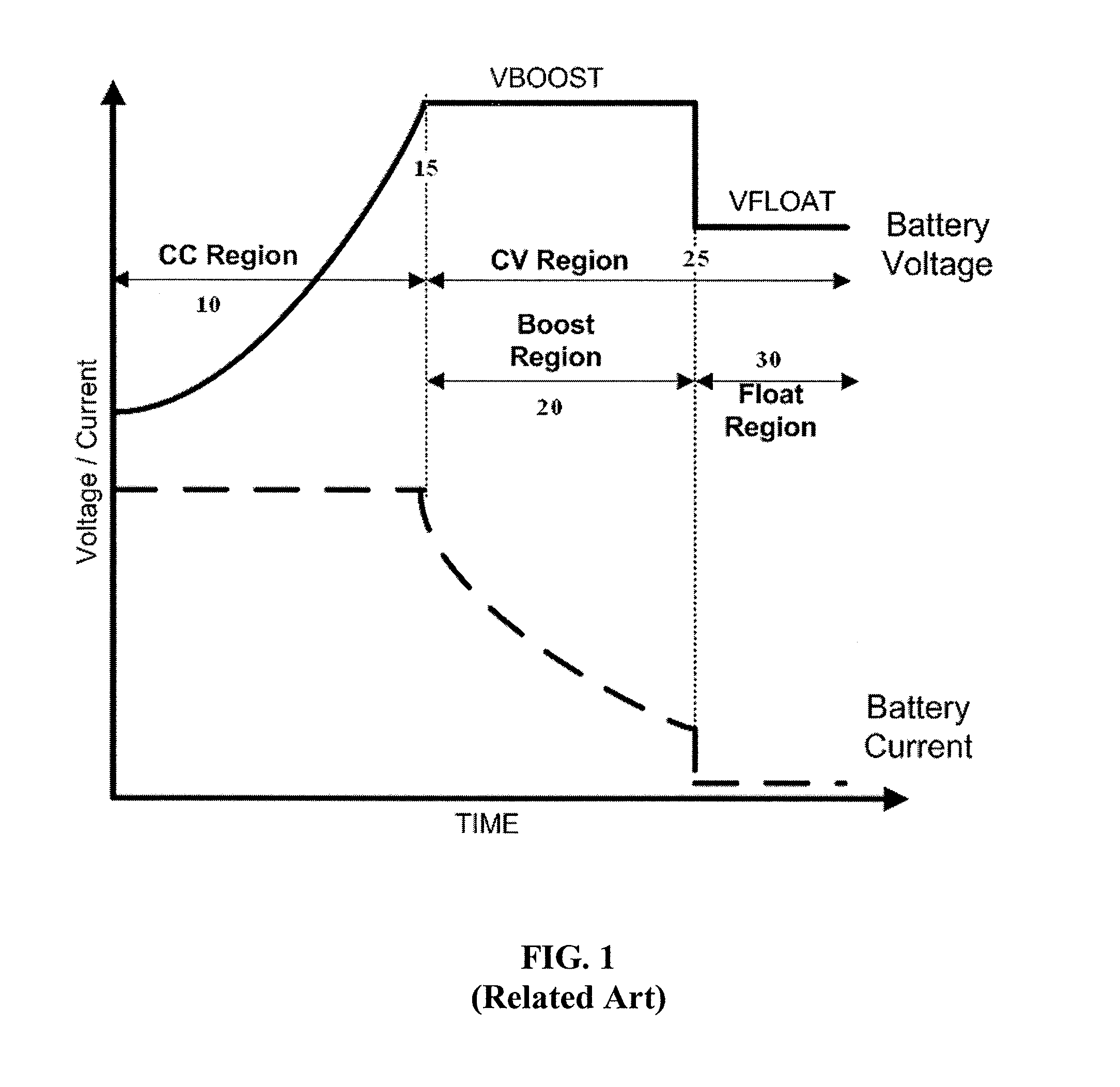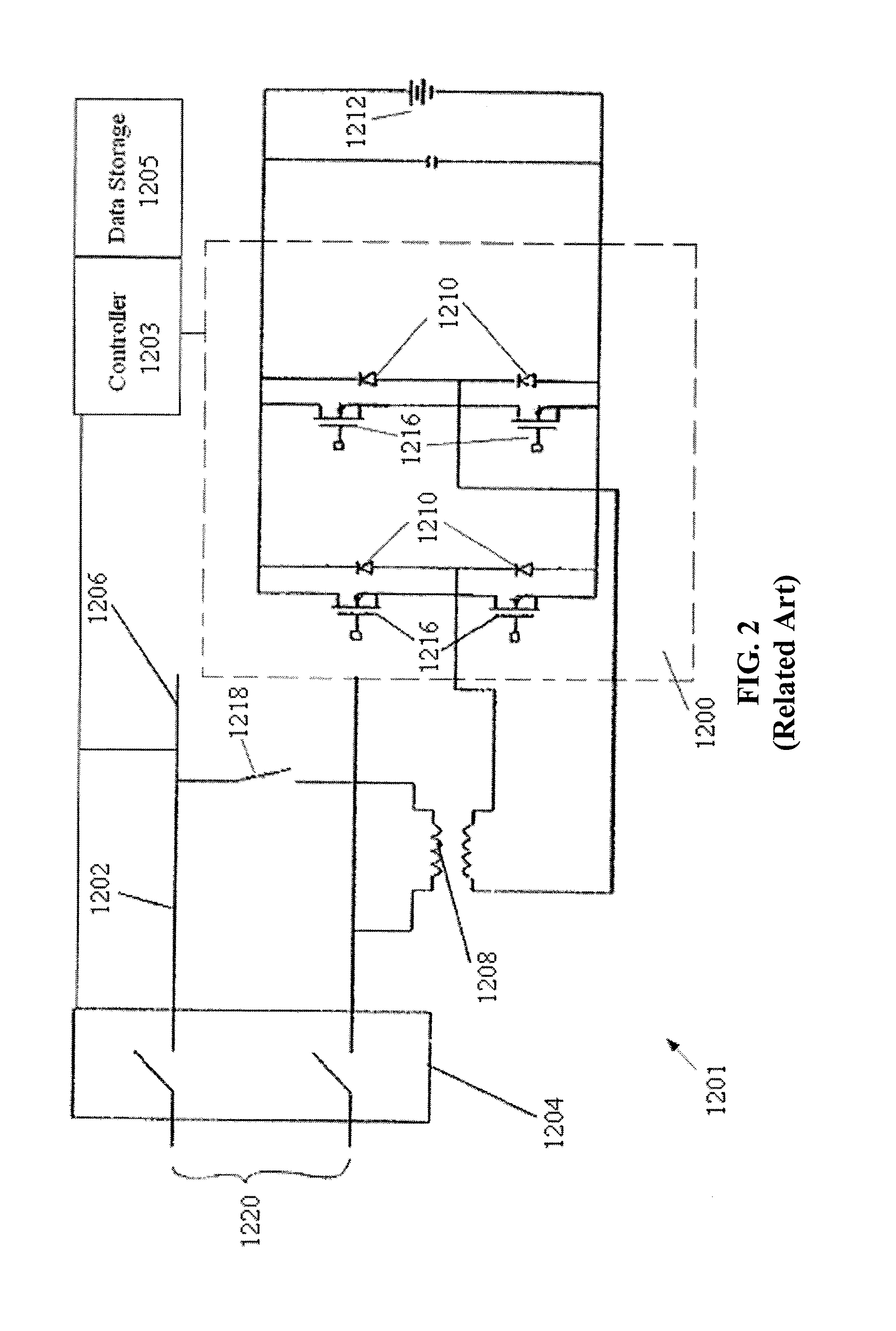Battery charging method and apparatus
- Summary
- Abstract
- Description
- Claims
- Application Information
AI Technical Summary
Benefits of technology
Problems solved by technology
Method used
Image
Examples
example 1
[0081]Referring to FIG. 12, there is illustrated a recorded charge profile for a battery when charged according to an embodiment of the present invention. The battery used was a lead-acid flat plate battery. As can be seen from FIG. 12, the battery was charged in constant current mode in region 10 until the battery voltage reached the boost region voltage level chosen for this battery, which in this instance was approximately 14.2 volts. The battery voltage reached this level at time 15, after just under 10 hours of charging in constant current mode. It should be noted that the charger was not able to provide truly constant current to the battery throughout the entirety of the constant current charge mode. The current supplied dropped from just over seven amps to just over six amps over the course of the constant current mode charging.
[0082]The boost region charging in region 20 was carried out for just over five hours. This was the amount of time calculated to replace the amount of...
example 2
[0085]A test was performed comparing the manufacturer's recommended charging profile to a charging method according to an embodiment of the present invention. The test was conducted using an APC model HI800SQ UPS system, which included Prestolite model PM12000 12V-120AH batteries. It was found that using the charging method according to an embodiment of the present invention the battery back-up capacity may be significantly retained over a number of charge cycles as opposed to the manufacturer's recommended charge method. As can be seen in Table 1 below, using the manufacturer's charging method (the “Old Algorithm”) the amount of back-up time available from the battery dropped from 91 minutes to 71 minutes over five discharge / charge cycles. In comparison, using a method according to an embodiment of the present invention (the “New Algorithm”), there was a significantly decreased drop in available back-up time over the same number of charge cycles—a drop of from about 88 minutes to 8...
PUM
 Login to View More
Login to View More Abstract
Description
Claims
Application Information
 Login to View More
Login to View More - R&D
- Intellectual Property
- Life Sciences
- Materials
- Tech Scout
- Unparalleled Data Quality
- Higher Quality Content
- 60% Fewer Hallucinations
Browse by: Latest US Patents, China's latest patents, Technical Efficacy Thesaurus, Application Domain, Technology Topic, Popular Technical Reports.
© 2025 PatSnap. All rights reserved.Legal|Privacy policy|Modern Slavery Act Transparency Statement|Sitemap|About US| Contact US: help@patsnap.com



